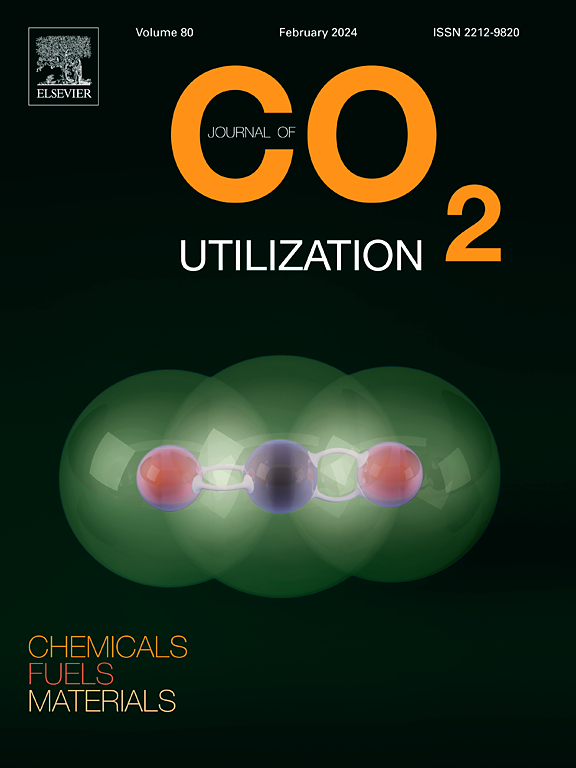Evaluation of single chamber electrochemical reduction of CO2 to formate for application under biocompatible conditions
IF 8.4
2区 工程技术
Q1 CHEMISTRY, MULTIDISCIPLINARY
引用次数: 0
Abstract
The electrochemical CO2 reduction reaction (eCO2RR) facilitates high rates and yields for the selective production of formate, a quintessential C1-compound that can serve as a valuable carbon and energy source for biosynthesis. The use of double-chamber (DC) electrochemical cells with membranes is deemed essential to avoid mixing of electrochemical products (i.e. anodic oxygen and cathodic formate) and thus cross-reactions that lower yields, Faradaic efficiency (FE) and effective rate. However, single-chamber (SC) setups for eCO2RR can be more suitable to combine with bioprocesses. This work comprehensively evaluates, using different experimental set-ups, the conditions under which SC operation can obtain results comparable to DC systems. At a 50 mL scale, under biocompatible conditions, formate production in the SC setup achieved a 14 % reduction in the production rate (146 mg L−1 h−1 for SC and 170 mg L−1 h−1 for DC) and a 15 % decrease in FE (72.2 % in SC and 84.7 % in DC). The highest formate concentration produced in 24 h SC experiments was 1.8 g·L−1 with FE of 41 %, a concentration appropriate for fermentation processes. The SC operation of eCO2RR to formate without a membrane could reduce energy losses and capital costs, although at the cost of an expected reduction in rate and FE.
评价生物相容性条件下单室电化学还原CO2生成甲酸的应用
电化学CO2还原反应(eCO2RR)为选择性生产甲酸酯(一种典型的c1化合物,可以作为生物合成的有价值的碳和能量来源)提供了高速率和高产率。使用带膜的双室(DC)电化学电池被认为是必不可少的,以避免电化学产物(即阳极氧和阴极甲酸盐)的混合,从而避免交叉反应,降低产率、法拉第效率(FE)和有效速率。然而,eCO2RR的单室(SC)设置可能更适合与生物工艺相结合。这项工作综合评估,使用不同的实验设置,在何种条件下,SC操作可以获得与直流系统相当的结果。 50毫升范围内,生物相容性的条件下,甲酸生产SC设置实现了14 %减少产量(146 mg SC L−1 h−1和170 mg L−1 h−1直流)和15 %降低铁(72.2 在SC和84.7 % % DC)。24次 h SC试验产生的最高甲酸浓度为1.8 g·L−1,FE为41 %,适合发酵过程。在没有膜的情况下,eCO2RR的SC操作可以减少能量损失和资本成本,尽管其代价是预期的速率和FE的降低。
本文章由计算机程序翻译,如有差异,请以英文原文为准。
求助全文
约1分钟内获得全文
求助全文
来源期刊

Journal of CO2 Utilization
CHEMISTRY, MULTIDISCIPLINARY-ENGINEERING, CHEMICAL
CiteScore
13.90
自引率
10.40%
发文量
406
审稿时长
2.8 months
期刊介绍:
The Journal of CO2 Utilization offers a single, multi-disciplinary, scholarly platform for the exchange of novel research in the field of CO2 re-use for scientists and engineers in chemicals, fuels and materials.
The emphasis is on the dissemination of leading-edge research from basic science to the development of new processes, technologies and applications.
The Journal of CO2 Utilization publishes original peer-reviewed research papers, reviews, and short communications, including experimental and theoretical work, and analytical models and simulations.
 求助内容:
求助内容: 应助结果提醒方式:
应助结果提醒方式:


